Giants and ogres are central archetypes in the fairytale cast. Though similar, they’re not exactly the same.
GIANTS AND OGRES: THE DIFFERENCE
Giants are big. That’s their defining feature. Ogres have a massive appetite. That’s their defining feature, and in true fairytale fashion, their body is an outworking of their inner story. Because of their massive appetites, they also happen to be big.
The songs and stories that feature ogres and cannibal devils and other monstrous eaters raise questions about the very nature of desire and our ways of expressing it: do our appetites make us monstrous?
Marina Warner, No Go the Bogeyman
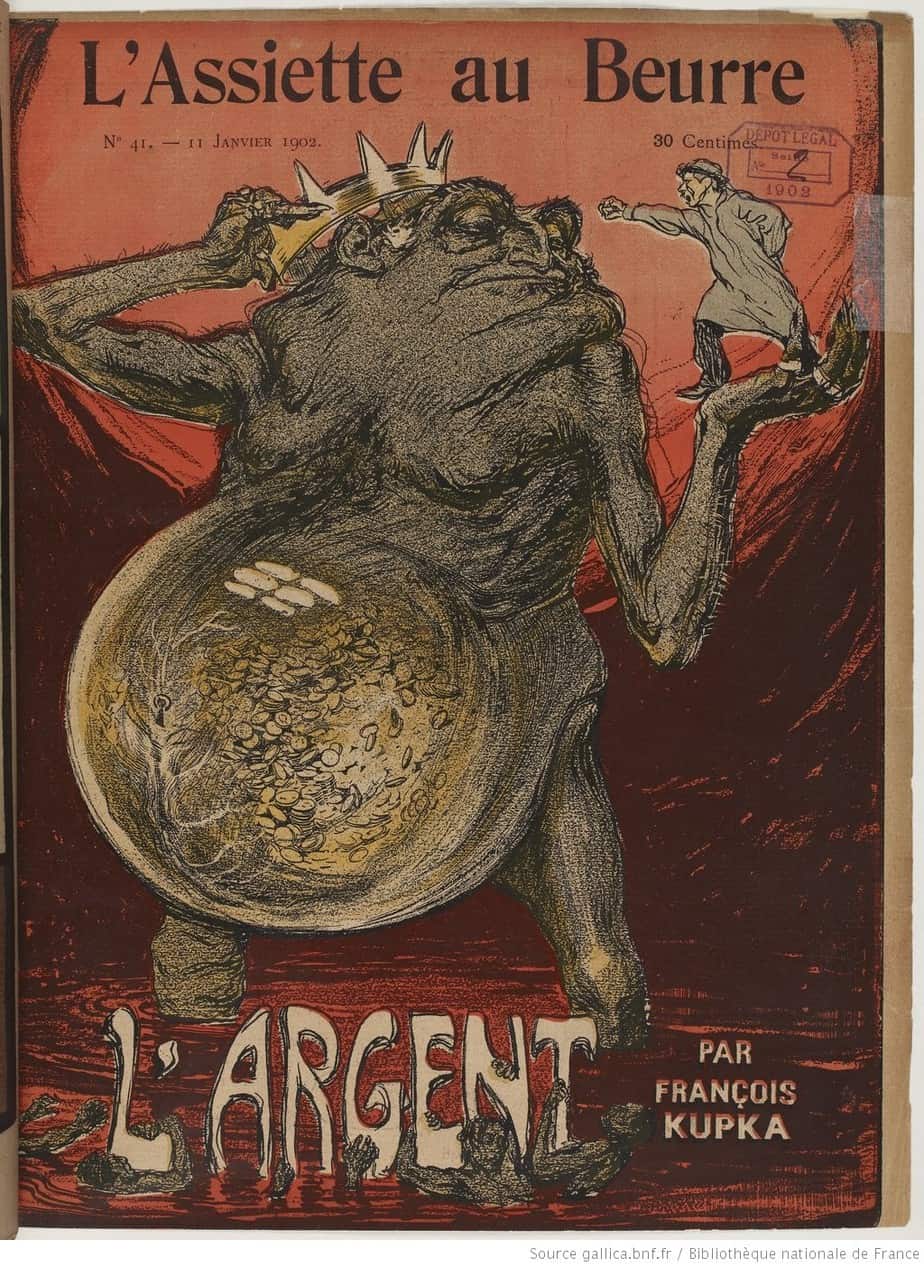
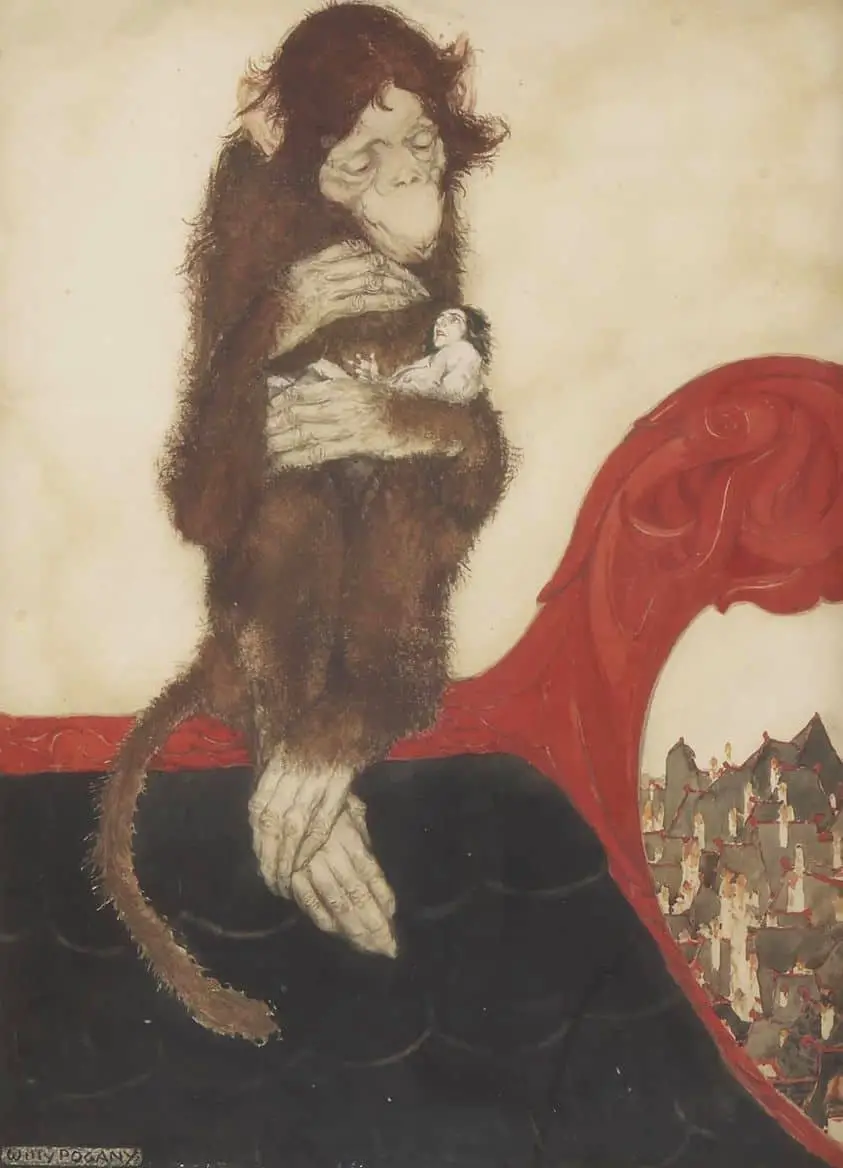
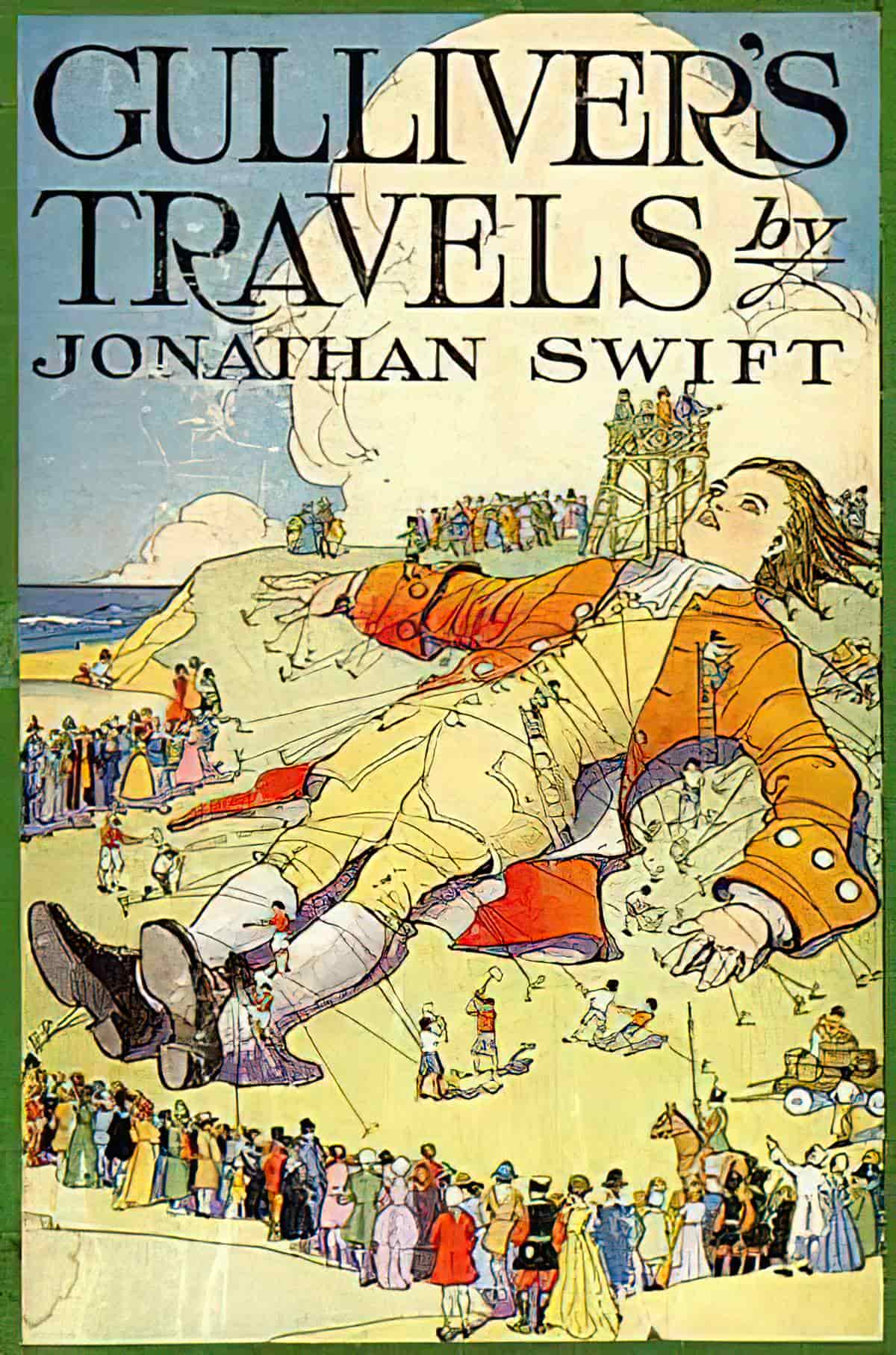
Interestingly, when Gulliver’s Travels was adapted for children, the first person narrative was changed to third person because in those days children’s books existed primarily for pedagogical/didactic purposes.
- It was thought that the third person narrator could better ‘teach’ something to the young reader.
- It was thought that children were not developmentally ready for the first person because they’d think they were reading about a real person.
- A first person narrative can be more engaging, and therefore too frightening.
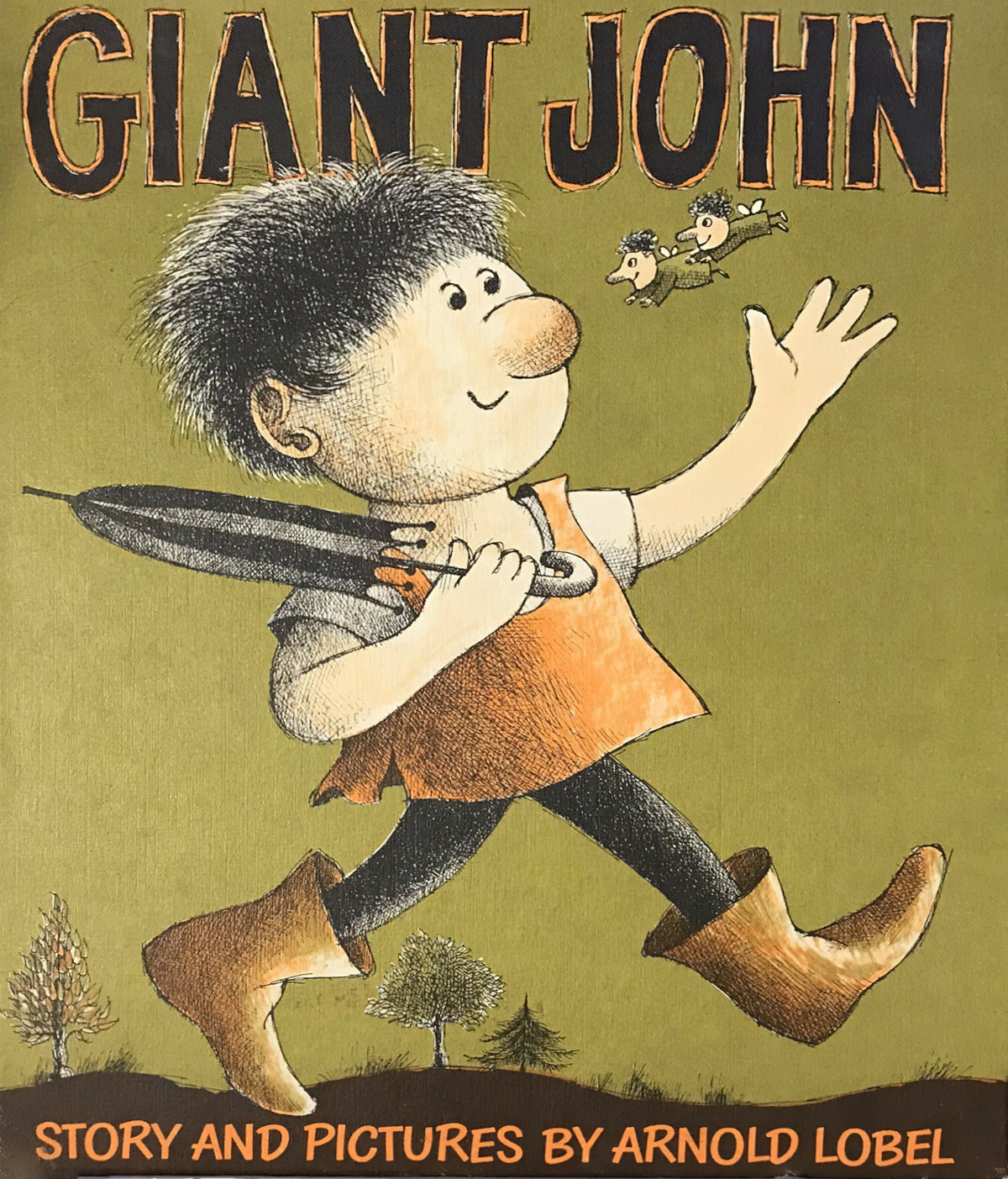
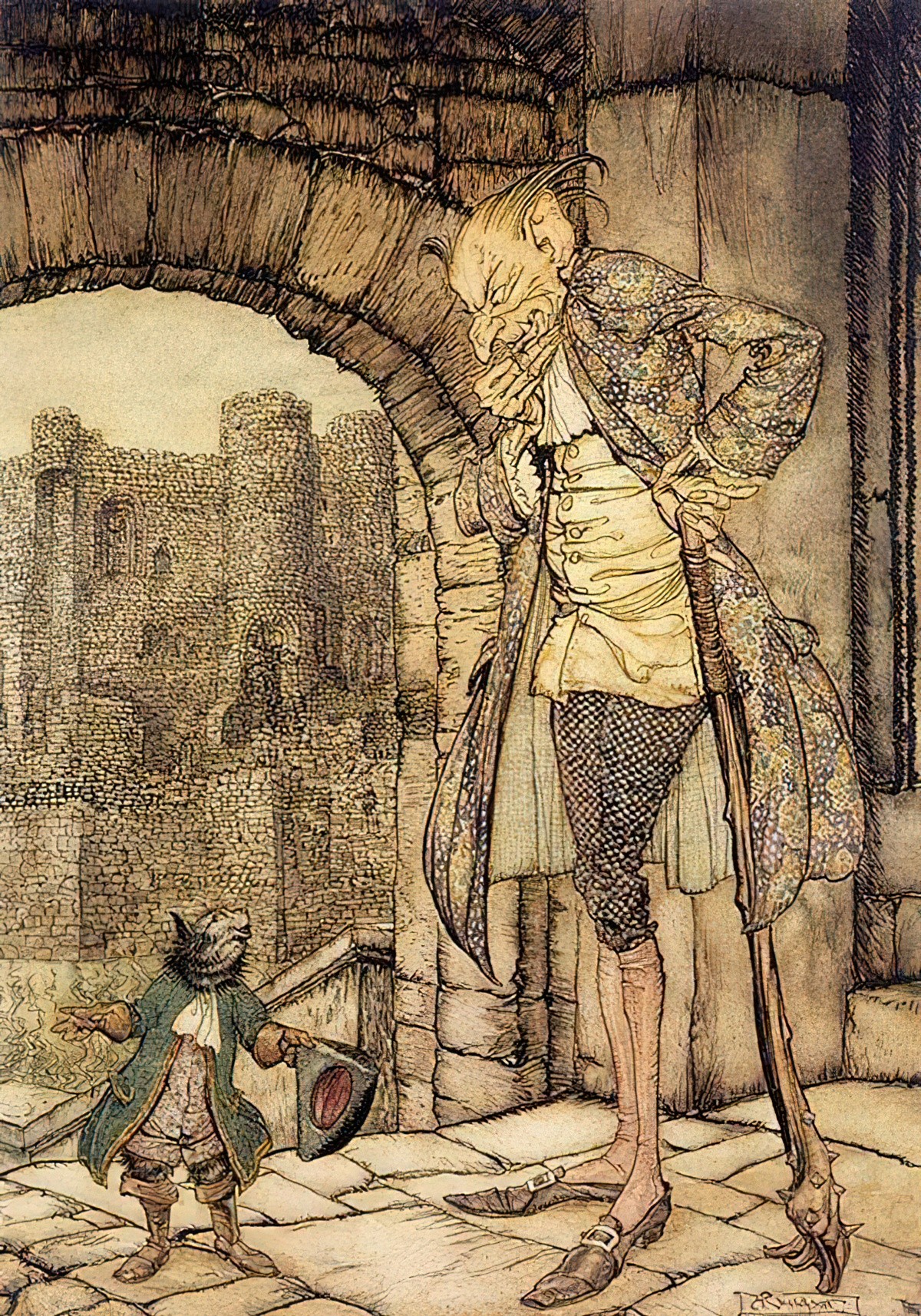
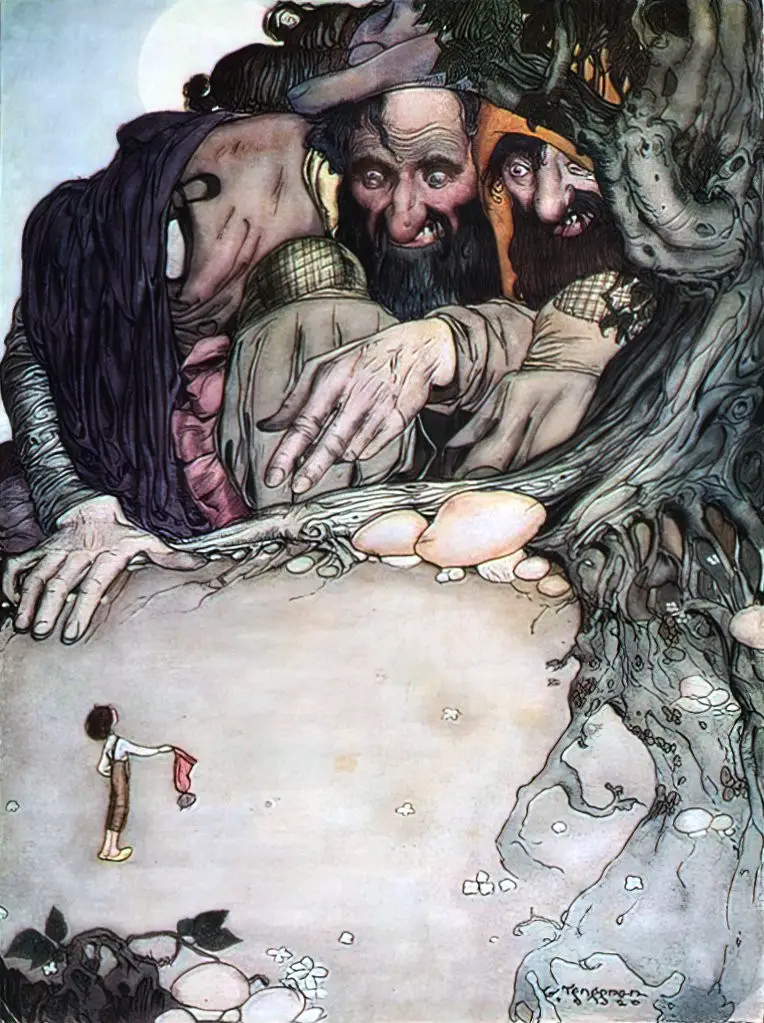
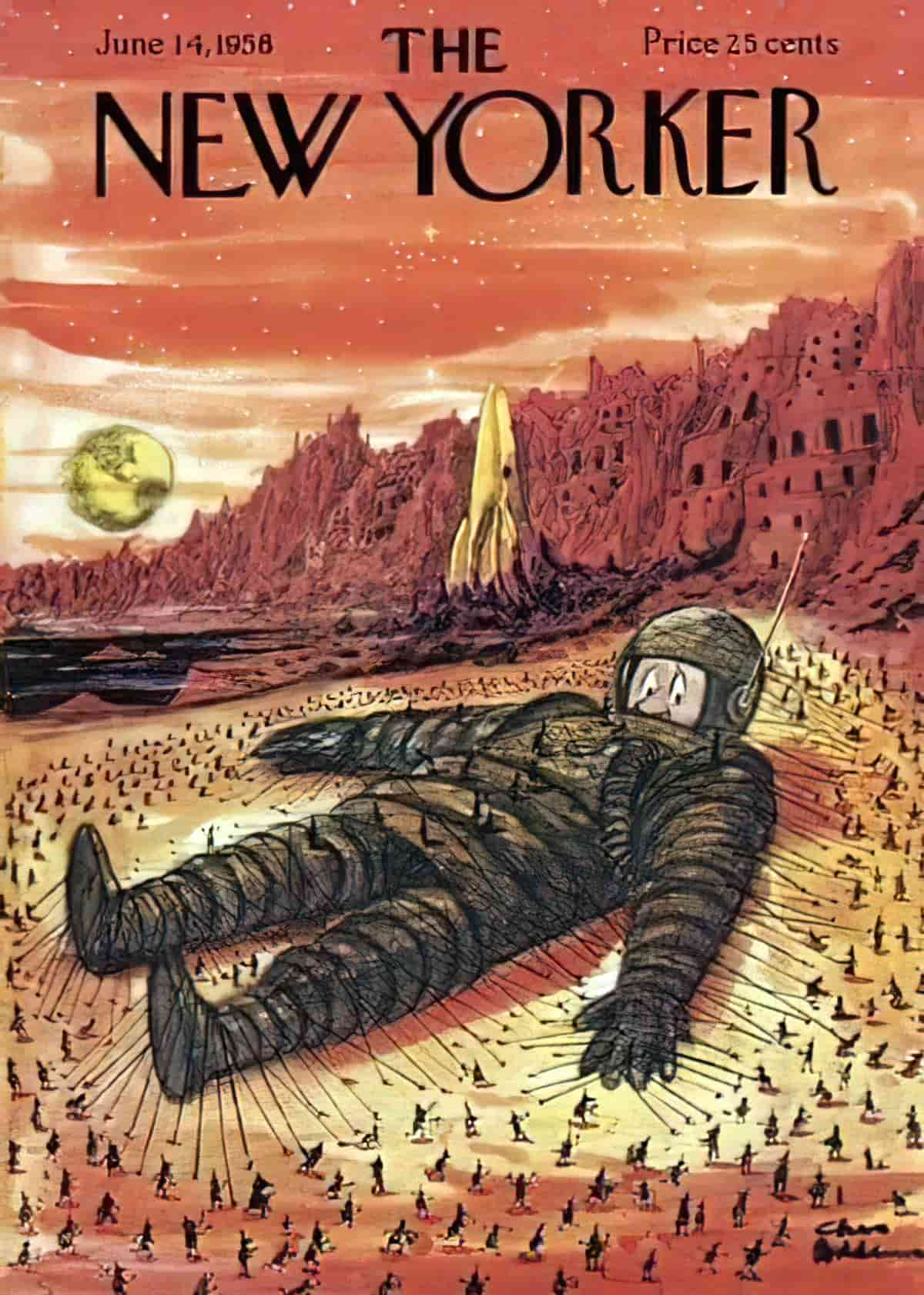
Ogre stories are related to the Oedipal plot, about the big struggle of power between fathers and sons.
Ogre stories are about food and power, about food in the right place and who puts it there, and vice versa. This concern has grown, as monsters have proliferated and their appetites been ever more luridly dramatised, so that fading and monstrosity have begun to coincide in meaning: from the Cookie Monster of Sesame Street to the dinosaurs of Jurassic Park.
Marina Warner, No Go the Bogeyman

When you think of an ogre you have probably been conditioned via modern narrative to code him male. But go back to antiquity and we find fearsome female creatures who very much fit the description of an ogre.
An excellent example is the reproductive demon Gello. Reproductive demons are coded femme because they concern themselves with wreaking havoc for babies and their mothers. They kill babies, take them, eat them. Gello was thought to have been from the island of Lesbos. She died as a virgin then, because she was cut off in the prime of her life she remained incomplete. The state of incompleteness is a dangerous thing to be. It means you’ll come back and haunt people once you’re dead. So Gello did just that. She hung around as a ghost and ate babies in a rather extreme case of lateral violence.
Artus Scheiner (Czech, 1863-1938) Illustrations for the story “Otesanek or The Long-Desired Child” from Slavonic Fairy Tales by Karel Jaromír Erben. A poor couple wished and wished for a child. One day the man finds a tree root that resembles a small child. He takes it home to his wife and the root speaks, saying it is hungry. Soon it starts eating everything in sight, including the couple, and it grows and grows.


A BRIEF HISTORY OF GIANTS IN STORYTELLING
It’s hard to think of an example of a good ogre, but giants in storytelling are often shown to be not so bad — simply misunderstood, out of place.
Defeated giants inspire a certain patronising affection, as mirrors of a buried and superseded ancestry […] and they enter the comic repertory of entertaining tales. […] Paradoxically, it is the monsters done to death by heroes who survive gloriously, narrated again and again as part of their murderers’ destinies.
Marina Warner, No Go the Bogeyman
Giants in World Myth
I wonder why Africa and South America are the only continents without widely recalled tracks of giants.
- Let’s go right back to inferno’s giganti (Virgil’s Dante), who strike terror in the poet. Dante (the character) names Nimrod, who built the tower of Babel. Ephialtes was one of the Titans who rebelled against Zeus. Also, Zeus defeated the Titans with his thunderbolts.
- In Norse mythology, jots are ‘huge, shaggy beings of a demonic character who dwell in a distant dark chaotic land.
- The order of the monstrous belongs to a horrible, frightening past. We continue to be fascinated by giants and we like to summon them to mind in the present.
- Giants and ogres have been superseded in popular storytelling. Though immortal, they’re always in the throes of defeat. However, the story of the big struggles that overthrew them is rehearsed again and again. Often in contemporary storytelling The Corporation stands in for The Giant.
- Celtic gods, who were supplanted by Christian saints, are a kind of giant.
- The Nephilim, (from Genesis) are the heroes of days gone by, the offspring of gods coupling with the daughters of men.
- Atlas (one of the deposed Titans) foreshadows the Catholic giant St. Christopher. Christopher is literally Christo-phoros, the Christ-bearer (suggesting he was big and strong).
- Further back in time, beings were thought to grow larger than today (we see it in contemporary stories such as Jurassic Park). The New World was imagined as a haunt of giants. (Did people suspect dinosaurs even before dinosaur bones were unearthed?) People imagined men with one eye in the middle of their chests, who shaded themselves from the sun with a single, gigantic foot.
- Paranormal giants: Yeti, Abominable Snowman, Bigfoot, Sasquatch, Yowie (Aboriginal Australia, who goes by a similar description to a Hobbit, with big, hairy feet.)
- As mentioned, most cultures have giant myths. My home country of New Zealand had Kiharoa and Matua, among others:
There is the story of Kiharoa, a giant of the Ngati-Raukawa and Ngati-Whakatere tribes, who met his death about a hundred and fifty years ago. His stronghold was Tokanui Pa, on the middle hill of the “Three Sisters,” the conical hills which are seen close to the present motor road through the King Country a short distance south of the Puniu River. The story has it that he was twice the height of an ordinary man, and he wielded a hard-wood taiaha of unusual length and weight. He was killed at last when he slipped on some karaka leaves as he fought in a big struggle just outside his pa. His enormous head presently decorated the palisades of Totorewa, a pa of the Ngati-Maniapoto. An excavation for an oven to cook the huge body was made where he fell, and in one’s youth in those parts the “Giant’s Grave,” as it was called, in the fern, was pointed out by the Maori; the spot is close to where the Tokanui Hall now stands at the cross-roads. Two fathoms long and a foot over, is the native word-of-mouth record of Kiha-roa’s height. It may seem slightly exaggerated; but let us be generous and allow that he was at least eight feet.
There was another giant of these parts long ago, one Matau; like Kiharoa, he was a man of the Ngati-Raukawa tribe, and, too, his favourite weapon was the taiaha. He lived on a hill above the Wairaka River, a few miles beyond Orakau. Maori accounts aver that he was eleven feet high.
Legends of the Maori, Victoria University
German Fairy Tales
Jakob Grimm commented that ‘In the giants as a whole, an untamed natural force has full swing, entailing their excessive bodily size, their overbearing insolence, that is to say, their abuse of corporal and mental power.’
Seven-mile boots (or seven-league boots) are an element of European folklore. They allow the person wearing them to take strides of seven leagues per step, resulting in great speed.

English Fairy Tales
In The Chronicles of Geoffrey of Monmouth, Albion is a mighty British giant, defeated with all his giant cohorts and his brothers Got and Magog, by the founder of London, Brutus. (Albion is most remembered.)
Anywhere you have a child, or young person, dealing with giants, the comparison to Jack (of giant slayer and beanstalk fame), is inevitable
Fairytale News Blog
Gulliver’s Travels by Jonathan Swift (1726)
When Lemuel Gulliver wakes to find himself stranded on the island of Lilliput, he has no way of knowing that this is just the first of his encounters with strange and unknown people, including the giants of Brobdingnag.
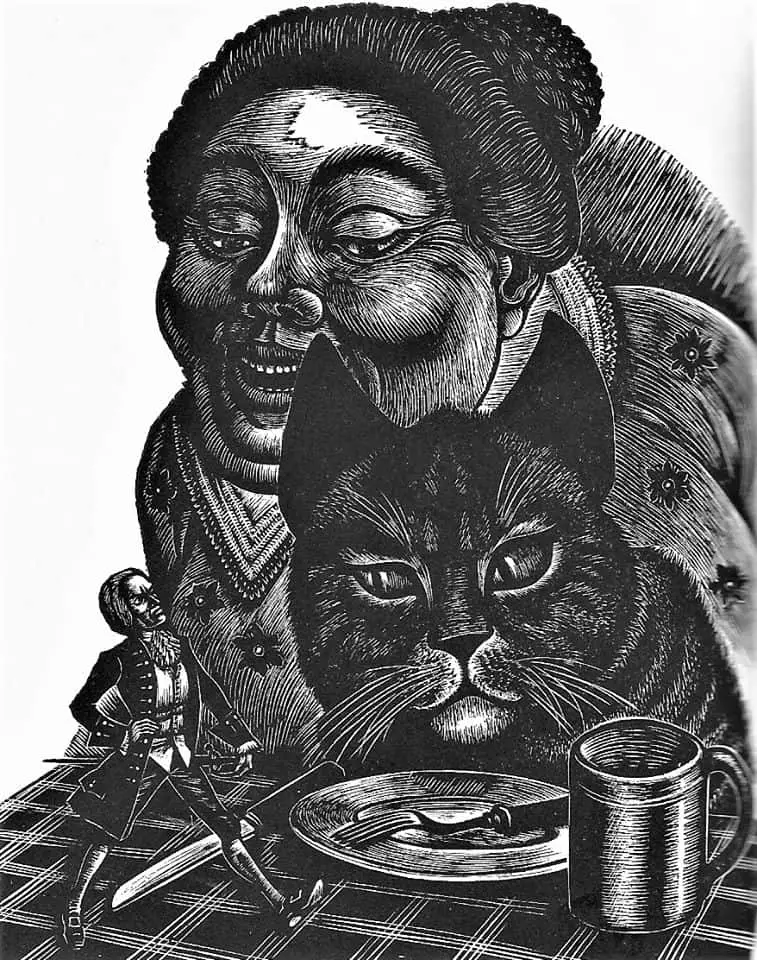
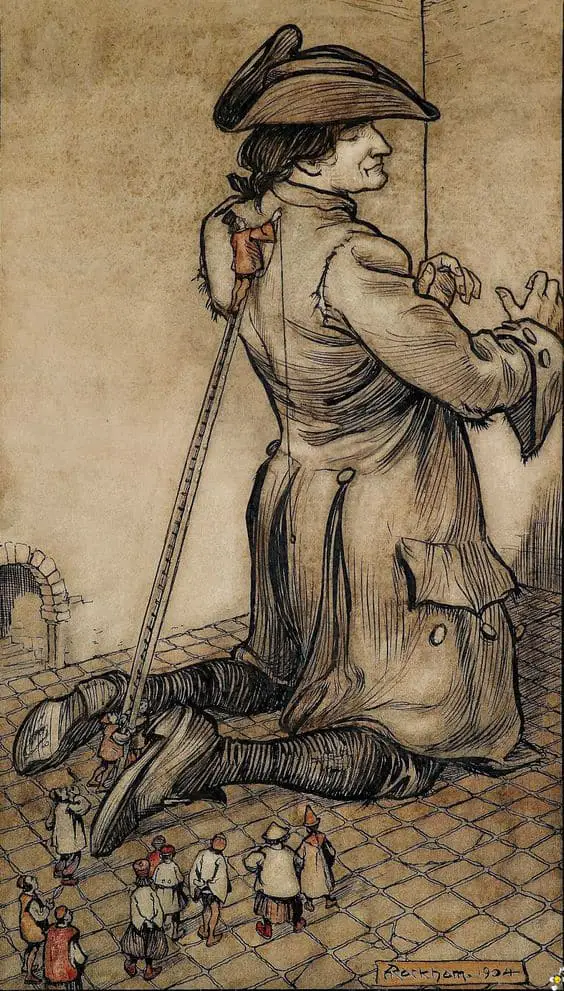
Gulliver In The Land of the Giants Illustrations by Giorgio Trevisan, 1960s
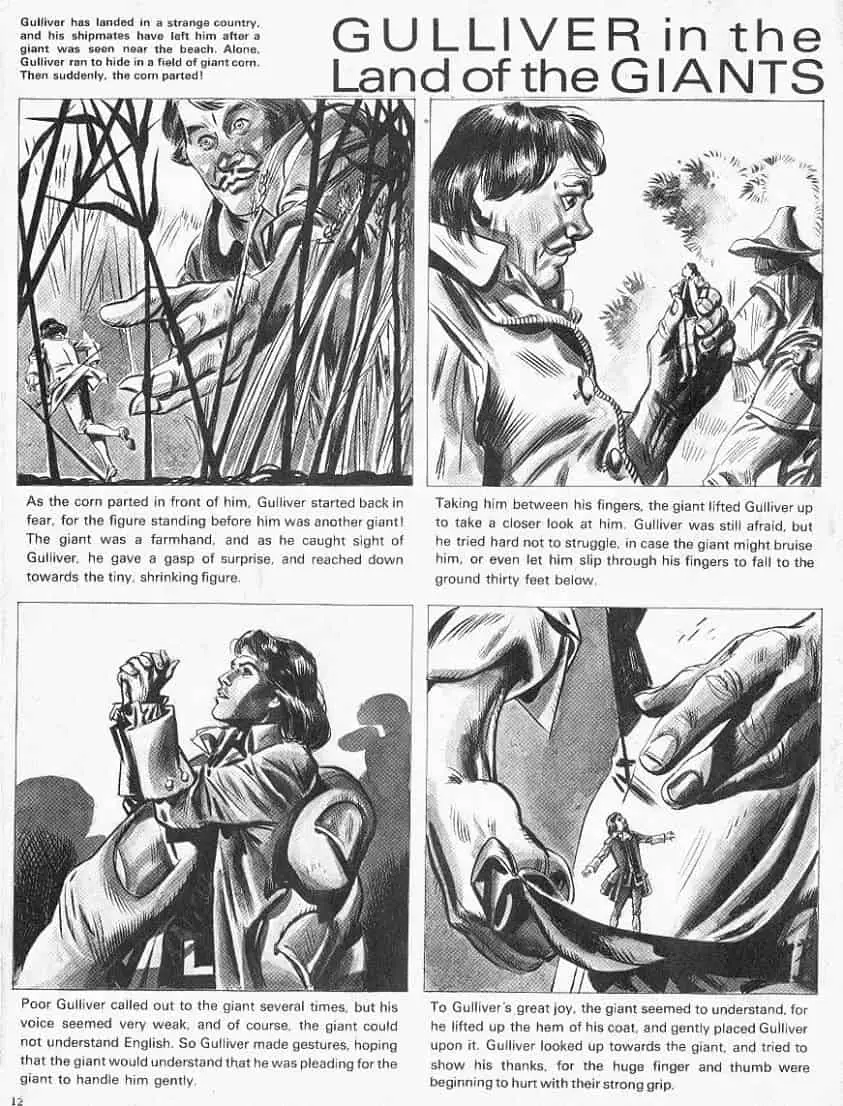
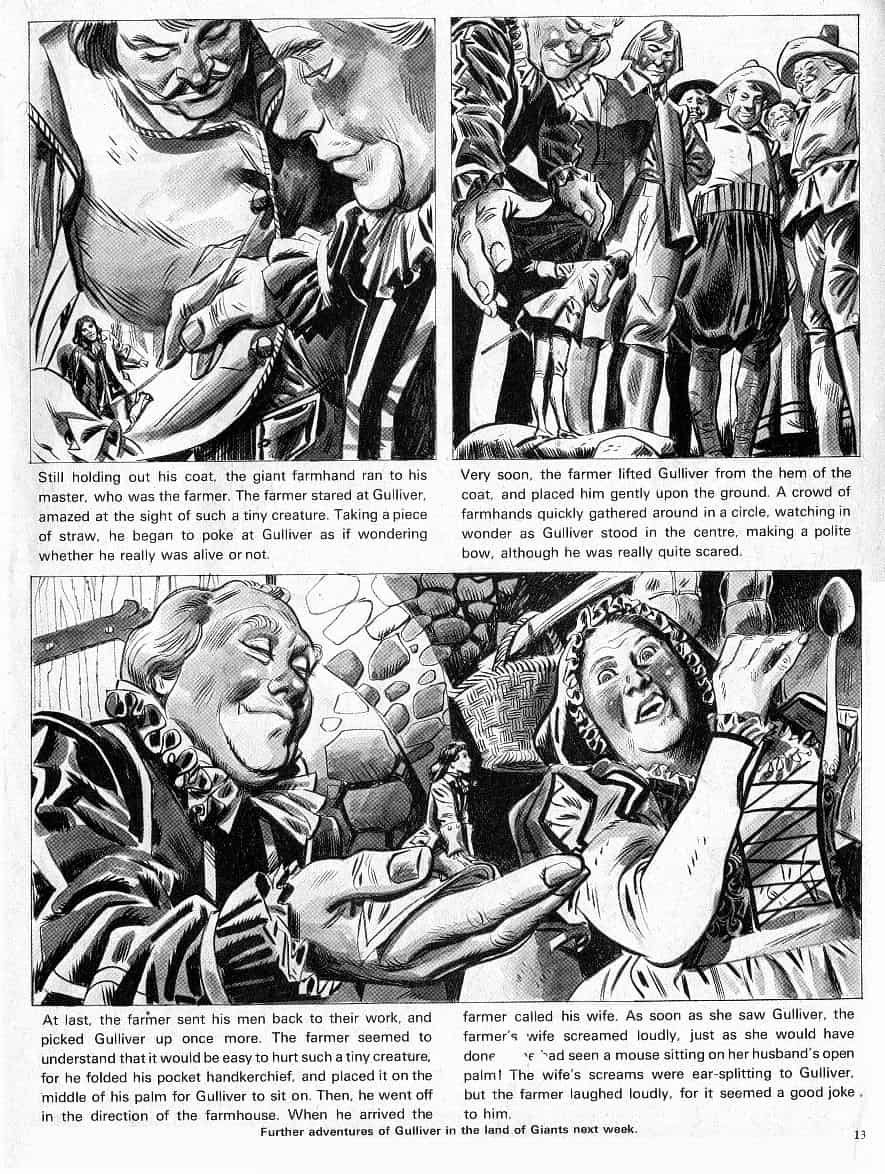
In real belief from around this time, giants were thought to exist, and expected to bark like dogs. Some iconic giants even had the heads of dogs. Did you know St Christopher had a dog’s head before he was converted from paganism to Christianity? (Saint Christopher is the patron saint of travellers.) He was depicted as a kind of Anubis, the jackal-headed ferryman of lost souls, from Egypt. Perhaps his hallucinations were inspired by this imagery, but the sixteenth century explorer Antonio Pigafetta (c. 1491 – c. 1531) said he heard giants barking when he sailed past Patagonia.
When Gulliver spoofed the long genre of travel writing, he sure had brilliant material to work with.
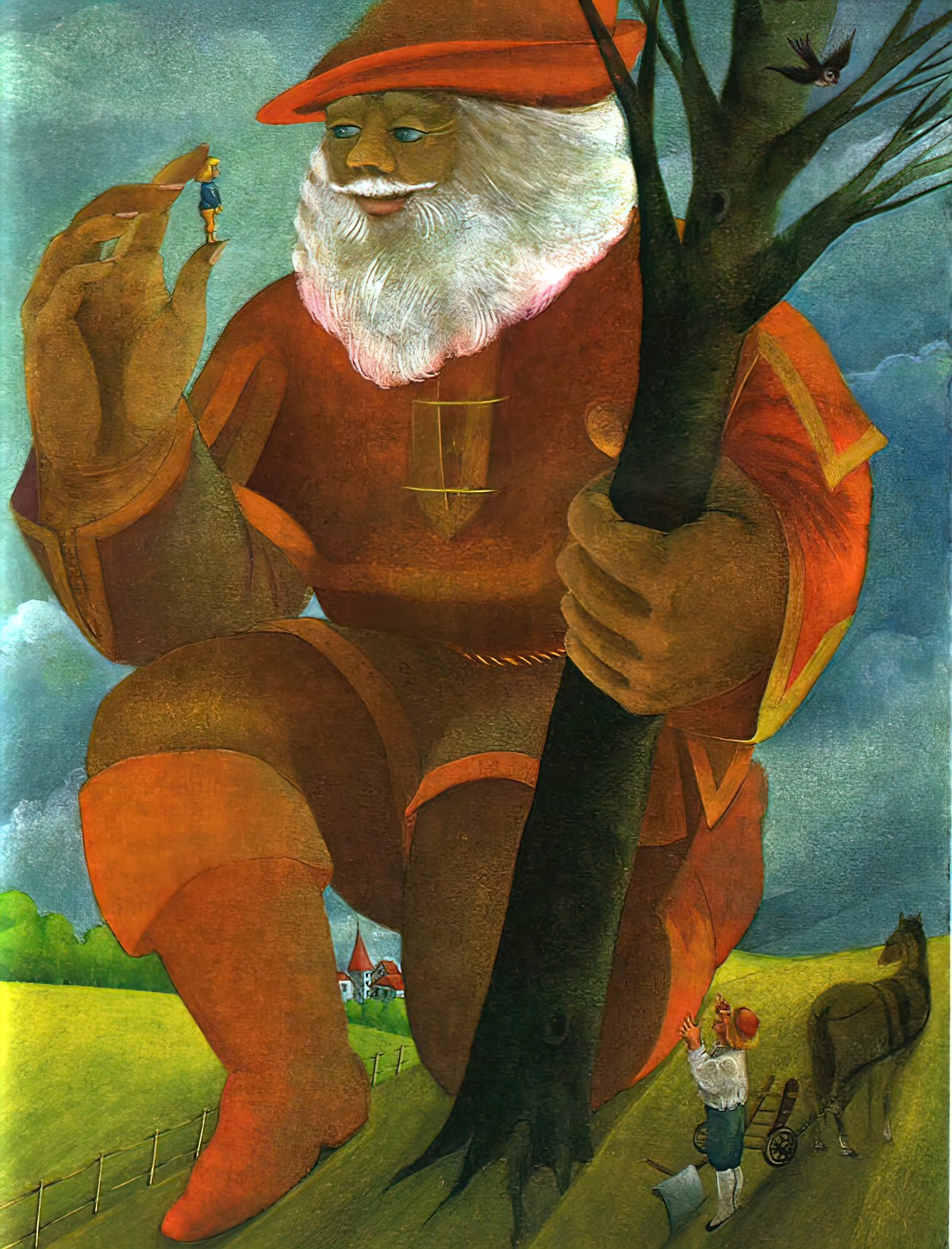
CONTEMPORARY GIANTS IN STORYTELLING
Odd and the Frost Giants by Neil Gaiman — Inspired by the Norse myths, Neil Gaiman takes readers on an epic journey with a boy named Odd and his animal companions as they try to save Asgard, the Norse city of the Gods, from the Frost Giants who have invaded it.
James and the Giant Peach by Roald Dahl — Visit a gigantic piece of fruit and the oversized insects that live inside it. One of Dahl’s most well-known stories, this book is a starting point for reading the rest of his works.
The BFG by Roald Dahl — This story is more obviously about giants, anthropomorphised. The giants draw on a long history of the cannibalistic ogre. I Kill Giants, the film
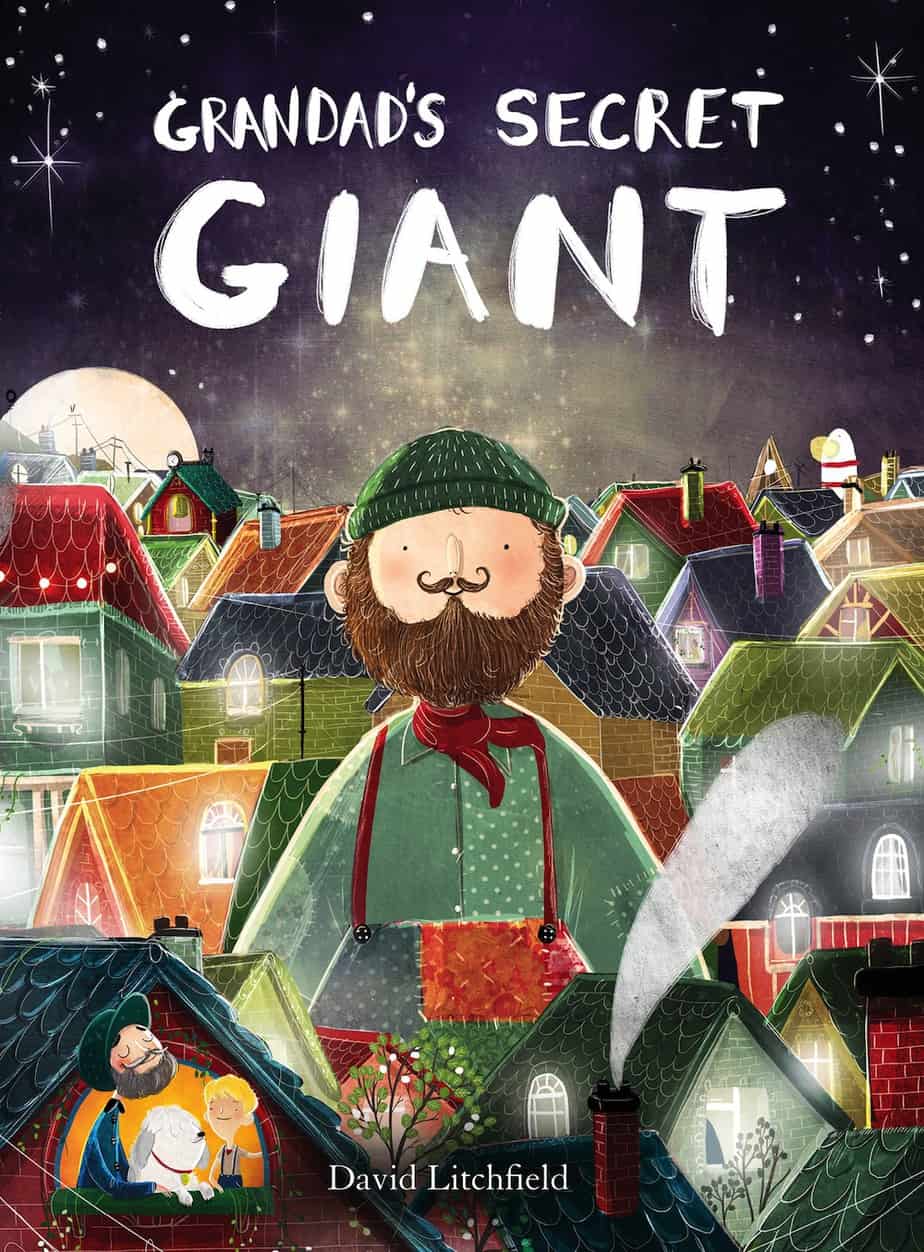
Giants And Symbolism
Giants are not what we think they are. The same qualities that appear to give them strength are often the sources of great shortcoming.
Malcolm Gladwell, David and Goliath: Underdogs, Misfits, and the Art of Battling Giants
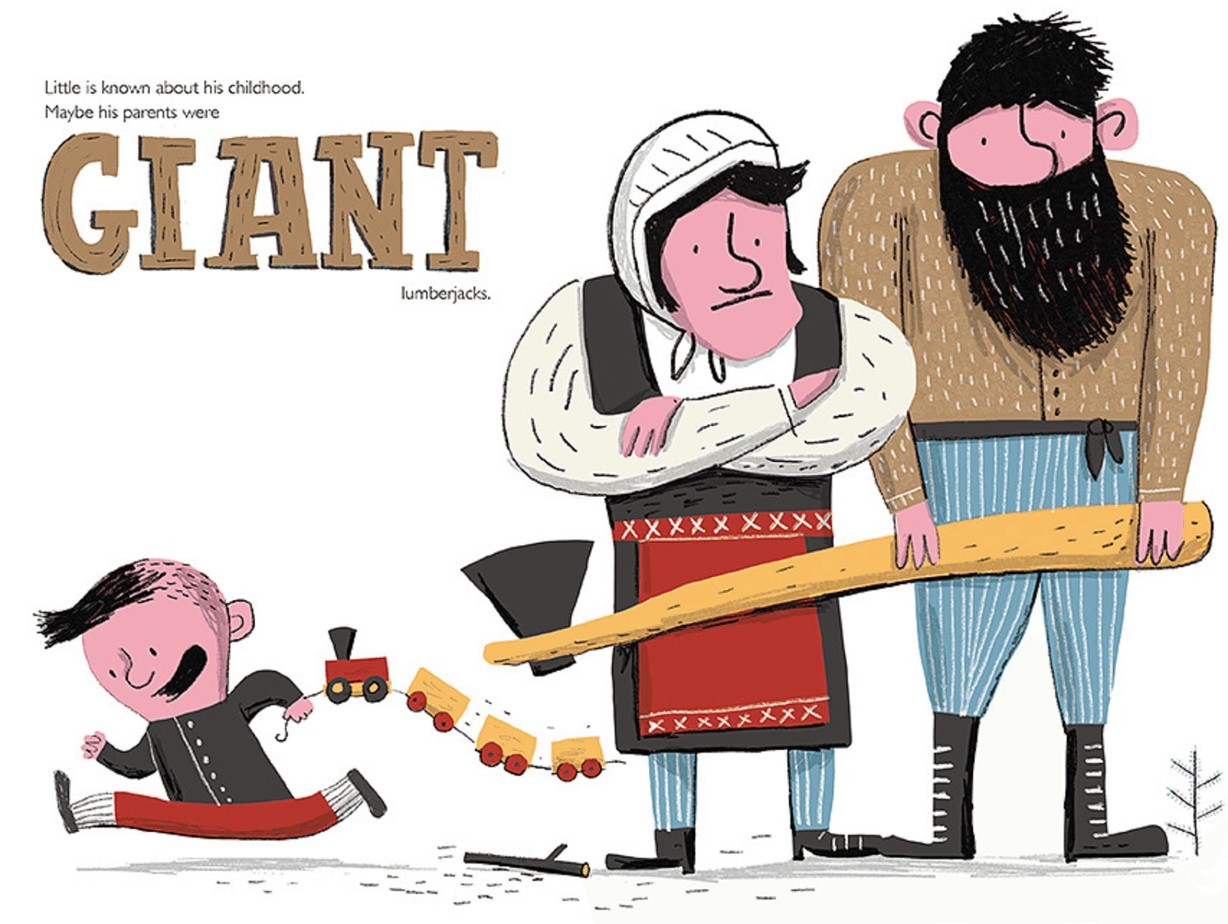
Giants are often depicted as hairy.
REAL LIFE GIANTS?
Mark Hall is an American scholar who has compiled global records of the existence of giants. He argues that gigantopithecus is another species of primate who were largely wiped out by us (as the Neanderthals were). But he also argues a few of them survive to this day. He describes them as we have long described giants in storytelling, conflating them with ogres:
- cannibalistic
- primitive
- huge
- far-dwelling — living in areas inhospitable to humans. (Dahl used this in The BFG.)
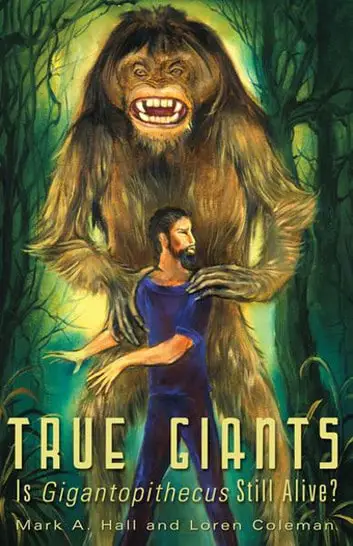
The Giant and How He Humbugged America by Jim Murphy
The Cardiff Giant mystery became one of 19th-century America’s biggest scams. See how George Hull fooled the masses when a large statue was uncovered on his farm.
Carnival Castells
Sometimes the risk-taking [of carnivals] is no masquerade but, as in bullfighting, places the participants in real danger: on feast days throughout Catalonia, confraternities form troupes of acrobats to build human castells or towers, living giants composed of eight or more tiers of men, girls and boys climbing one above the other, gripping thighs, backs and shoulders, until at the end the whole perilous edifice is crowned by the anxaneta, a small child who shins up to the pinnacle, which towers 40 feet or more above the ground.
No Go the Bogeyman, Marina Warner
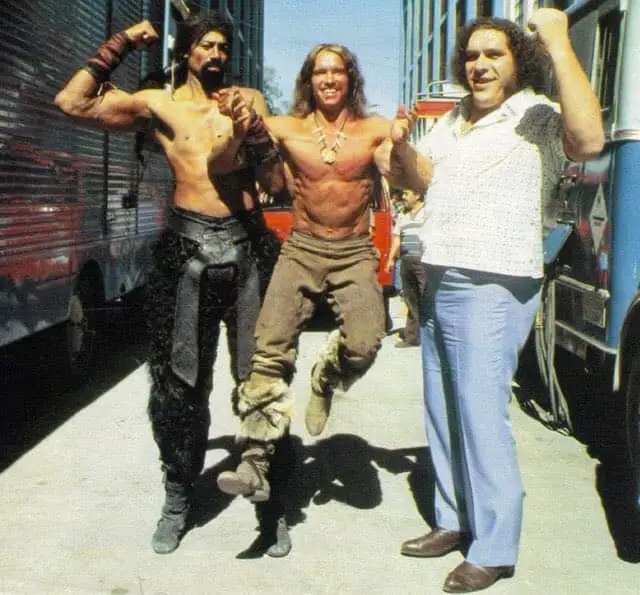
Wilt Chamberlain and André the Giant taking Arnold Schwarzenegger for a stroll
41 Strange (@41Strange) July 28, 2019
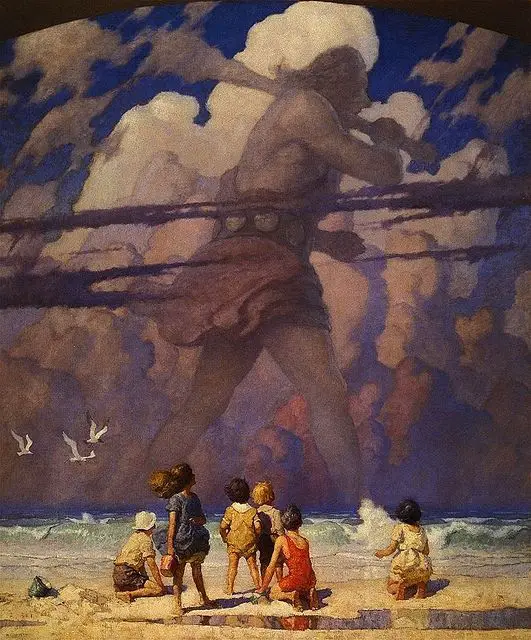
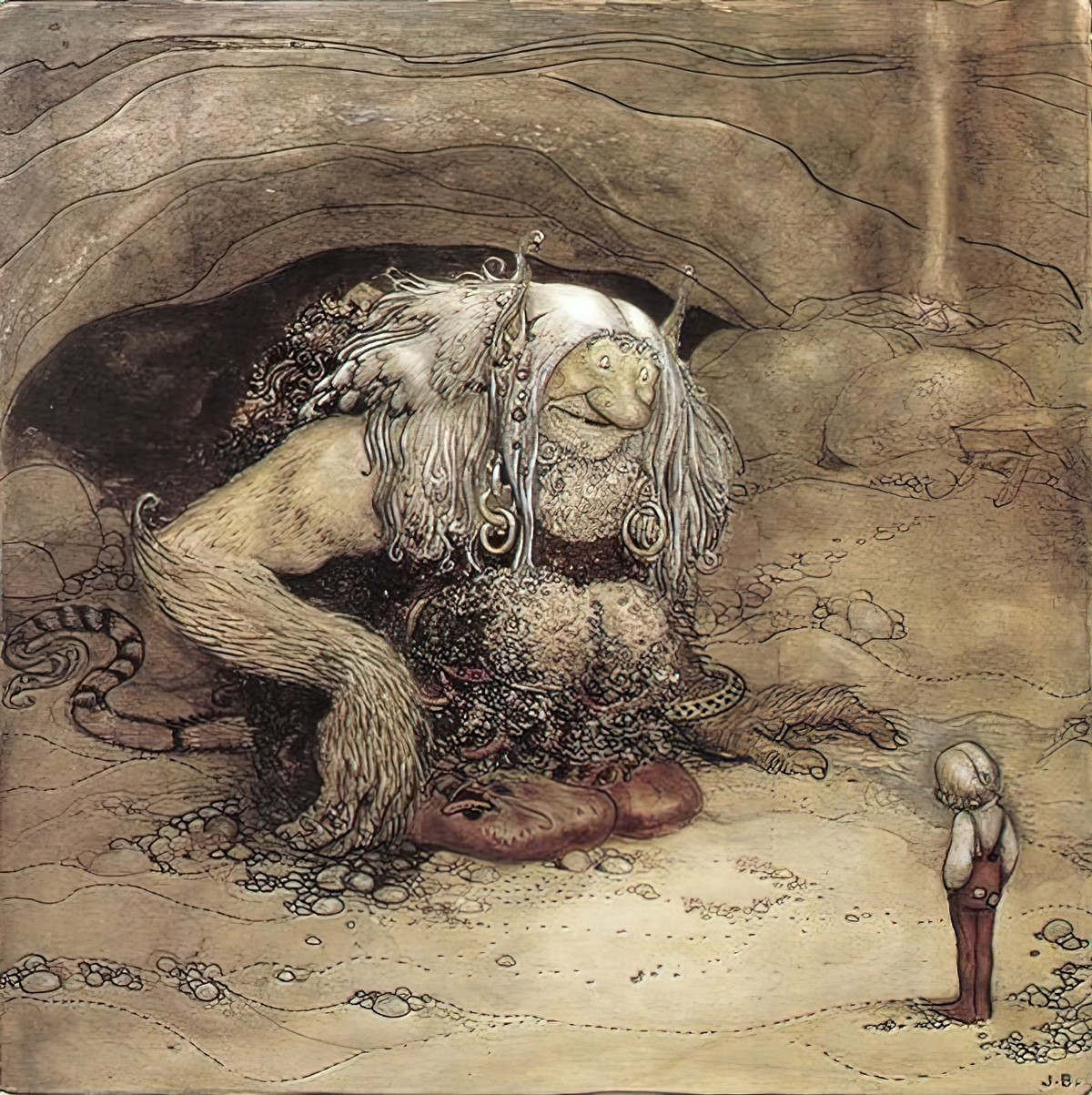
Andre The Giant
There have always been medical conditions which lead to large physical stature. One of the most famous is French wrestler. Unfortunately, real life ‘giants’ face real life discrimination, the result of millennia of negative storytelling archetyping (aka stereotyping).
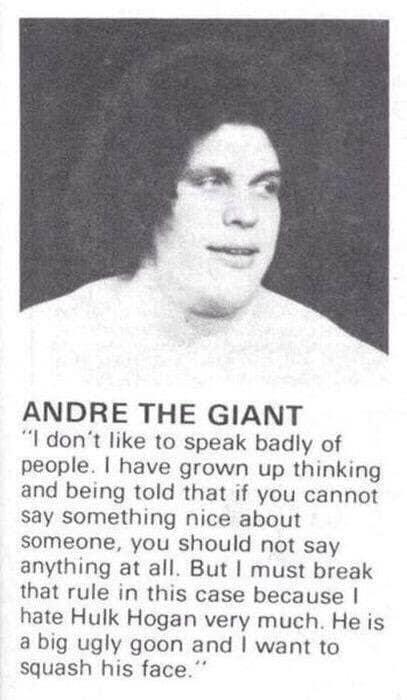
FURTHER READING
Talk for Writing Home-school Booklet: The Truth About Mountain Ogres by Dean Thompson
Ogres aren’t the only monsters with huge appetites. Sometimes it’s dragons e.g. The Dragon of Knucker Hole, Lyminster in Sussex. This dragon likes ‘pudden’ (Somerset dialect).
10 Alleged Discoveries That Suggest Giants Existed by Marcus Lowth
